|
THE CARTRIDGE COLLECTOR'S EXCHANGE |
||
|
|
Home of the Old Ammo Guy's Virtual
Cartridge Trading Table
Picture Page April 2019
Please note: Unless otherwise indicated, the pictures on this web site are my property, and should not be used by anyone without crediting the source. Vintage shotshell loading paraphernalia, Pt 2... Union Metallic Cartridge Company Metal Star Wads
. . I believe the star wads were originally packed in the box nested one inside the next forming several orderly stacks. Packing them loosely probably would have presented a challenge getting 250 to fit. .
.
Printed around the side-sealing label, in addition to the company name and location, is the statement "The METAL STAR WAD will hold the charge in place without
. . . . . .
.. closing the......". The remainder of the statement should say "ends of the shells" but on this particular box the last four words of the statement appear to have been covered up when the label was pasted on. .
. . . . . . . . . Included in the
box is this folded DIRECTIONS insert, which provides basic
instructions in the use of the star wads. It stresses the necessity for the
end of the 'loading
stick' to be . . . . . . . . . . . .
.
An advertisement from the front page of the August 18th, 1883 Army Navy Journal is shown here. which indicates the star wads can be placed in the shell (over the standard card top wad) with either side up, as was also pointed out in the directions above. This is due to the metal having been made of untempered (malleable) brass, which has no spring to it. As a result, pressing down hard on the metal wad with the .
'loader' (the
loading stick or plug) would flatten out
the star-shaped wad (regardless of which side was up) forcing the six points
slightly into the inside surface of the hull. The usual crimping o
. .
. . . . . . As noted in the Army Navy Journal advertisement, the star wads were available in both 12 and 10 gauge sizes. A 10 gauge box is shown above. The two boxes, 12 and 10 gauge, have matching dimensions except for their heights; the 12 gauge box is 2 1/16" x 2 1/16" x 1 1/8" high and the 10 gauge box is 2 1/16" x 2 1/16" x 1 1/4" high. . .
I suspect that UMC purchased the rights to the Seibold patent covering the six pointed metal stars that are in the box. Apparently, the Seibold patent infringed upon Smith's patent enough to require UMC to pay Smith also for the rights to use his patent, either as an outright purchase of the patent or as a royalty fee. I have included copies of the patent drawings and the specifications sheets for both patents below.
. . .
. . .
. . .
. . .
Sources: UMC Star Wad advertisement, The Army Navy Journal, Volume XX!, Number 3, Saturday, August 18, 1883, New York.
Copies of patents were obtained from the United States Patent and Trademark Office using Google Patents, https://patents.google.com
.
|

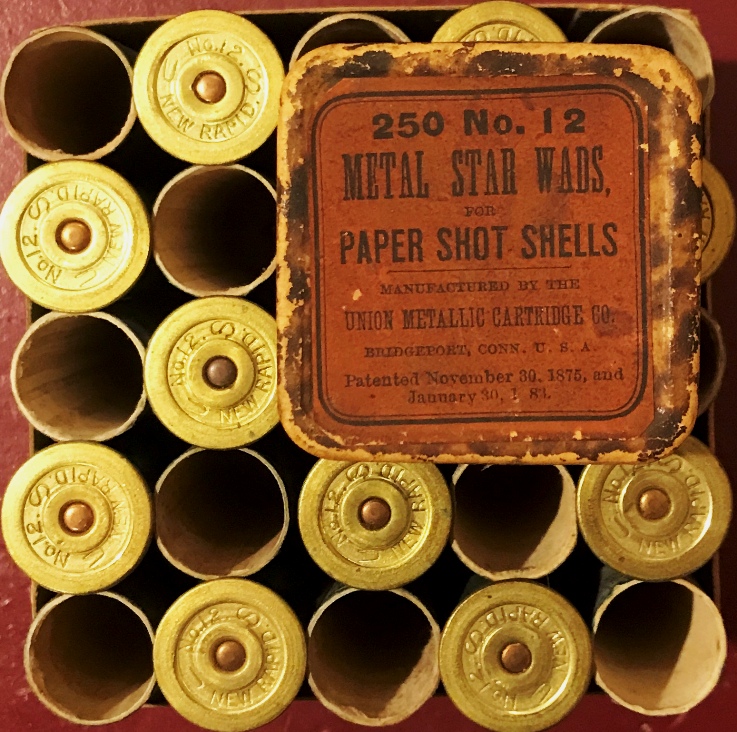 Shown
here is a box of '250 No. 12 METAL STAR WADS FOR PAPER SHOT SHELLS' made by
the Union Metallic Cartridge Company. It is sitting on top of a box of 25 U.
S. Cartridge Company 12 gauge New Rapid new primed empty paper shells made
between 1905 and 1910. This particular box of shells never had a label
attached, and was found by a picker aong with 11 matching full, unlabelled boxes in 1997
somewhere in the Northeast United States. It is believed that these boxes were originally sold by the U.
S. Cartridge Company to a shell loading company that would have applied
their own labels to the boxes once the shells had been loaded.
Shown
here is a box of '250 No. 12 METAL STAR WADS FOR PAPER SHOT SHELLS' made by
the Union Metallic Cartridge Company. It is sitting on top of a box of 25 U.
S. Cartridge Company 12 gauge New Rapid new primed empty paper shells made
between 1905 and 1910. This particular box of shells never had a label
attached, and was found by a picker aong with 11 matching full, unlabelled boxes in 1997
somewhere in the Northeast United States. It is believed that these boxes were originally sold by the U.
S. Cartridge Company to a shell loading company that would have applied
their own labels to the boxes once the shells had been loaded.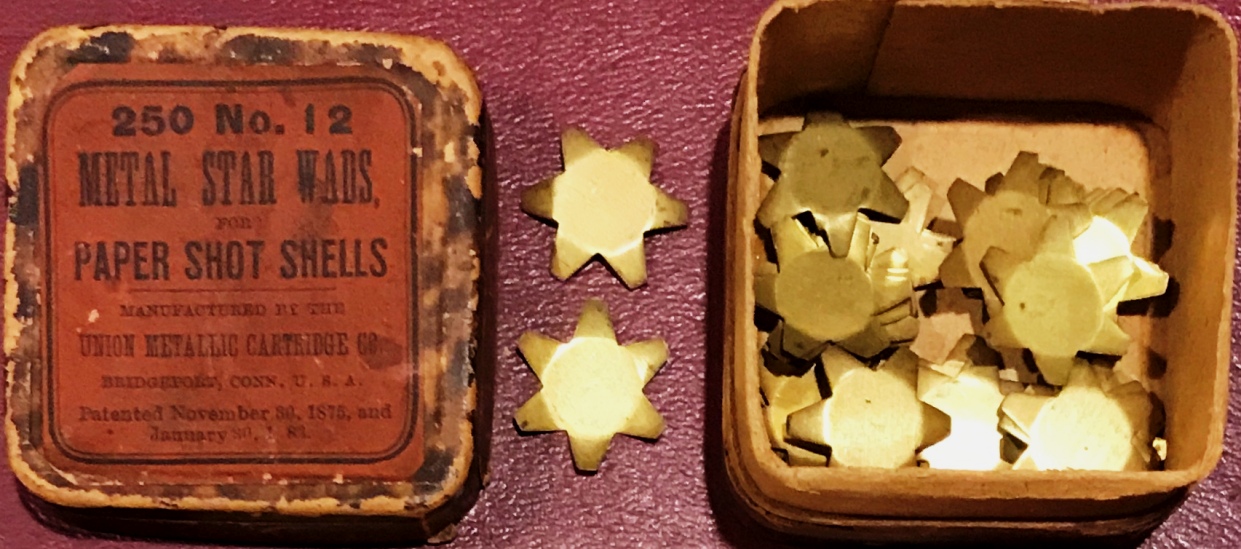
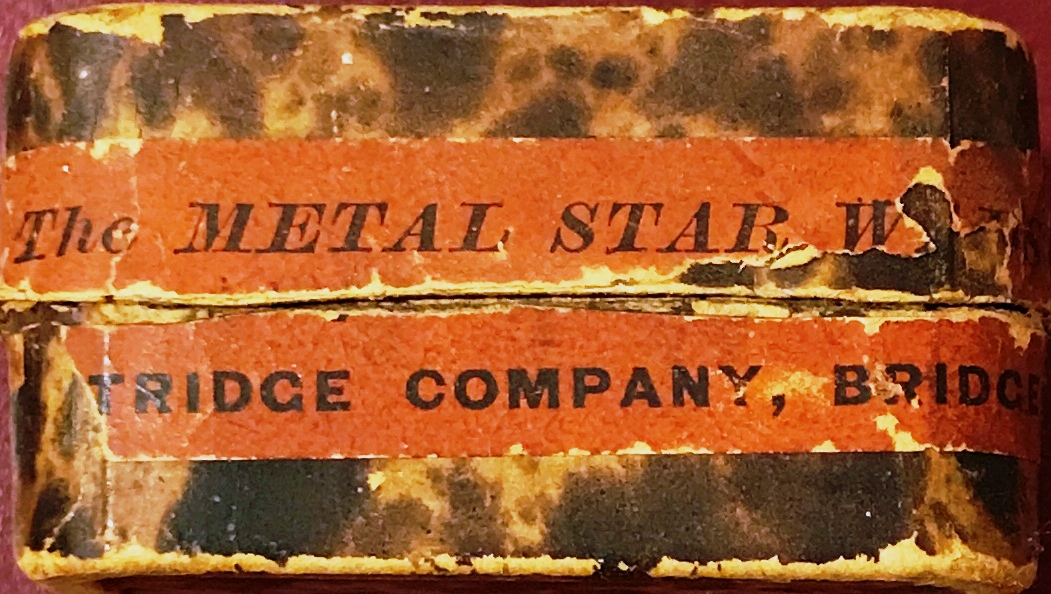
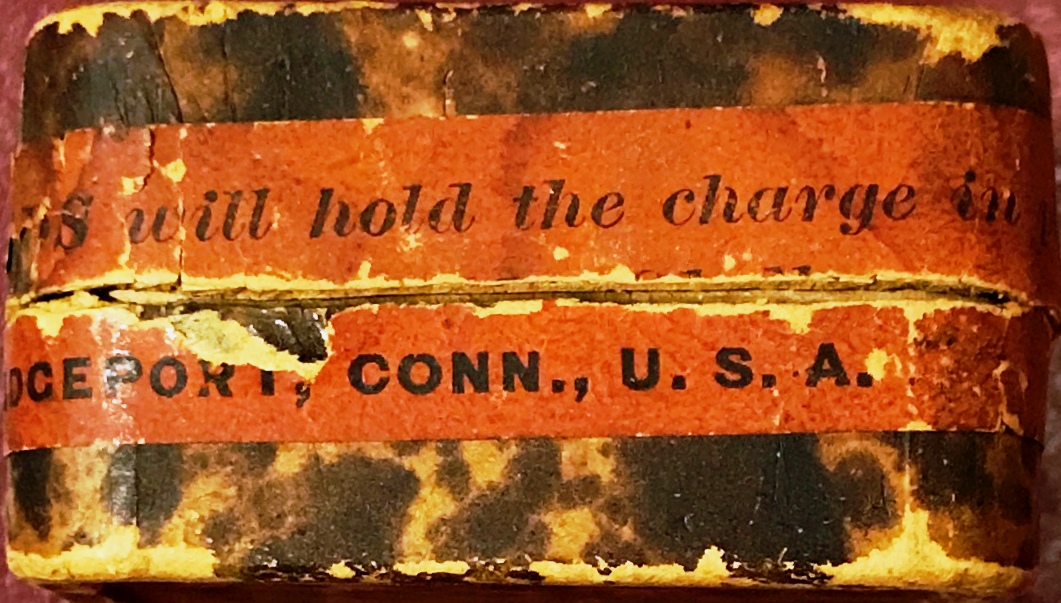
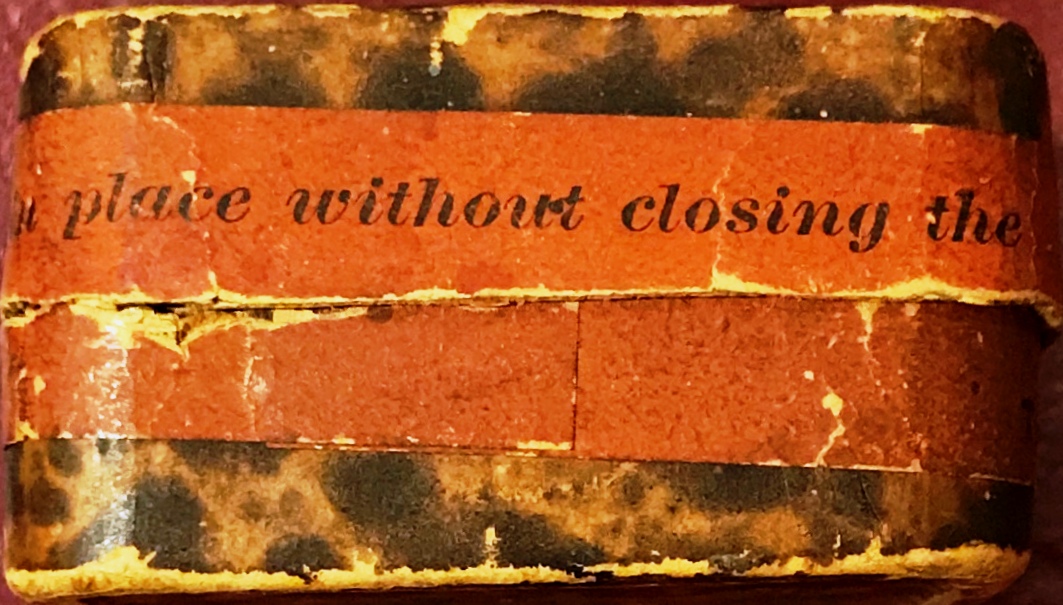
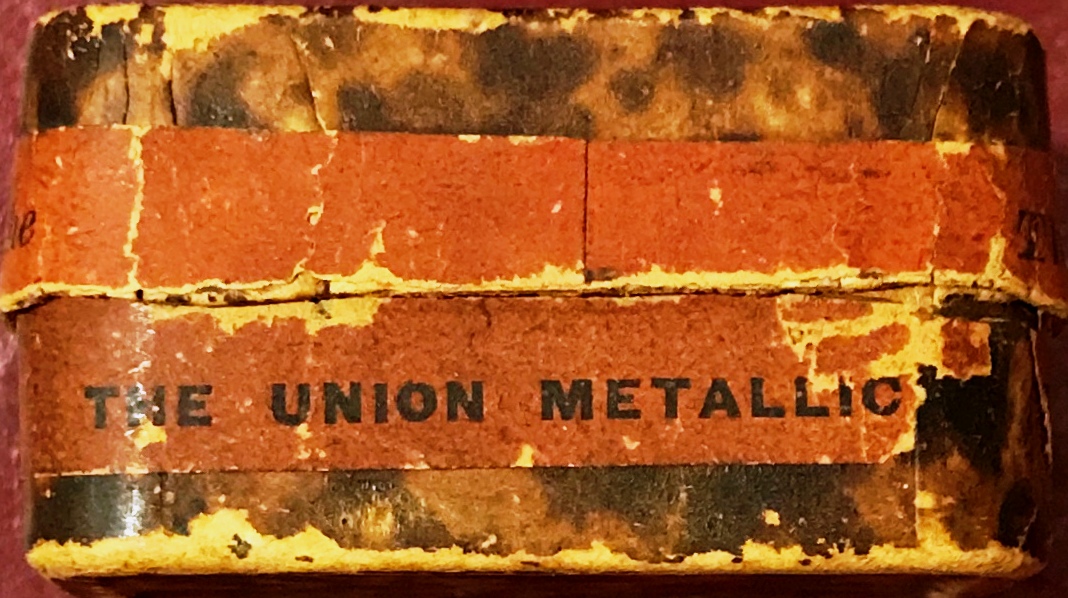
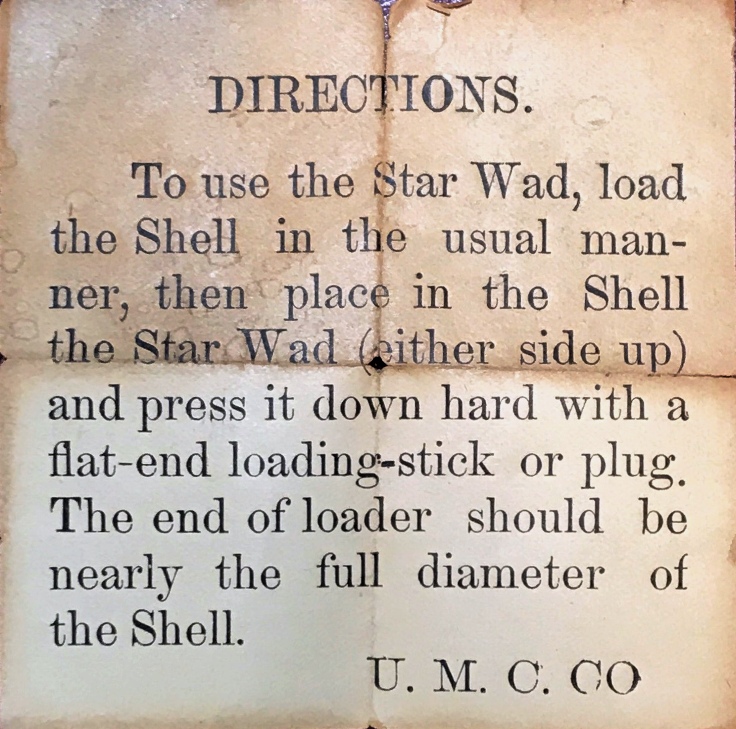 "nearly
the full diameter of the shell' to ensure that the star 'points' make
sufficient contact with the inside of the shotshell hull to grip adequately.
"nearly
the full diameter of the shell' to ensure that the star 'points' make
sufficient contact with the inside of the shotshell hull to grip adequately.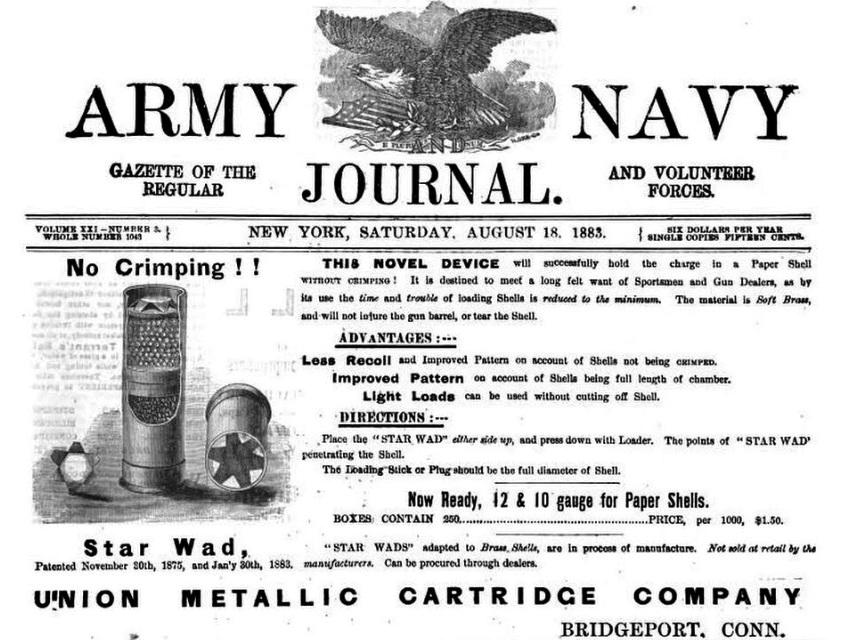
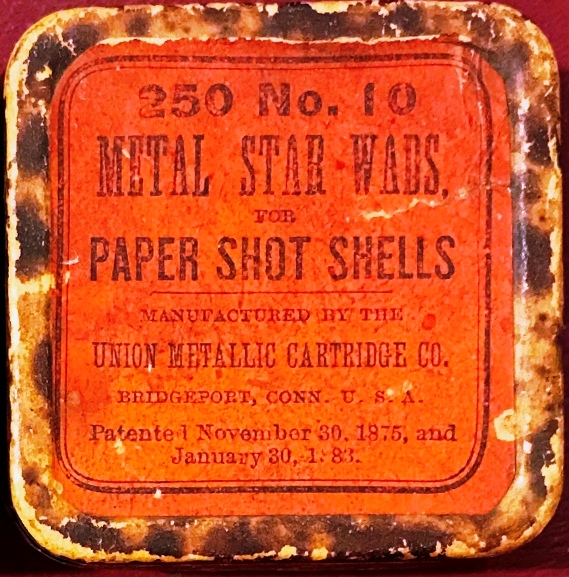 f the
mouth of the hull would not be necessary, as the metal wad would serve the
purpose of the crimp, holding the powder and shot in place. Because the
metal wad was untempered, the six points would readily bend when the shell
was fired, preventing
any significant damage to the paper hull and allowing the undamaged empty
case to be reloaded again. The downside of crimping a paper shell is that it
inevitably results in tearing and shredding of the case mouth requiring that
the shell be trimmed back; eventually, the shell would be too short to load.
f the
mouth of the hull would not be necessary, as the metal wad would serve the
purpose of the crimp, holding the powder and shot in place. Because the
metal wad was untempered, the six points would readily bend when the shell
was fired, preventing
any significant damage to the paper hull and allowing the undamaged empty
case to be reloaded again. The downside of crimping a paper shell is that it
inevitably results in tearing and shredding of the case mouth requiring that
the shell be trimmed back; eventually, the shell would be too short to load.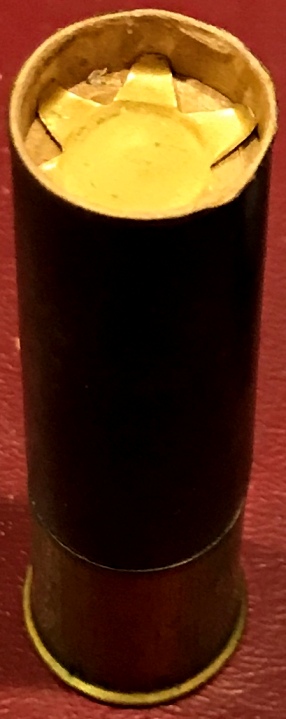 Having
read the directions for loading a shell using the star wad, I couldn't
resist trying one out, and went about finding a suitably sized loading stick
and an unloaded 12 gauge paper hull shotgun shell. It was quite easy to use,
and the resulting loaded shell appears to be satisfactorily held together
with the wad. Rapping the mouth of the shell hard against the top of my desk
several times had no affect on the metal star wad; it remained in position
and held the shot load securely in place.
Having
read the directions for loading a shell using the star wad, I couldn't
resist trying one out, and went about finding a suitably sized loading stick
and an unloaded 12 gauge paper hull shotgun shell. It was quite easy to use,
and the resulting loaded shell appears to be satisfactorily held together
with the wad. Rapping the mouth of the shell hard against the top of my desk
several times had no affect on the metal star wad; it remained in position
and held the shot load securely in place.  Two patent dates are
shown on the UMC Metal Star Wads boxes and in the Army Navy Journal
advertisement; these are November 30, 1875 and January 30th, 1883. The 1875
date is for patent number 170,643 awarded to George Smith. The Smith patent
covered multi-pointed metal wads that could be placed beneath the powder
charge and over the shot charge, also eliminating the need to crimp the mouth of
the hull. The 1883 date is
for patent number 271,527 awarded to Otto F. Seibold, the inventor of the
UMC metal star wads.
Two patent dates are
shown on the UMC Metal Star Wads boxes and in the Army Navy Journal
advertisement; these are November 30, 1875 and January 30th, 1883. The 1875
date is for patent number 170,643 awarded to George Smith. The Smith patent
covered multi-pointed metal wads that could be placed beneath the powder
charge and over the shot charge, also eliminating the need to crimp the mouth of
the hull. The 1883 date is
for patent number 271,527 awarded to Otto F. Seibold, the inventor of the
UMC metal star wads. 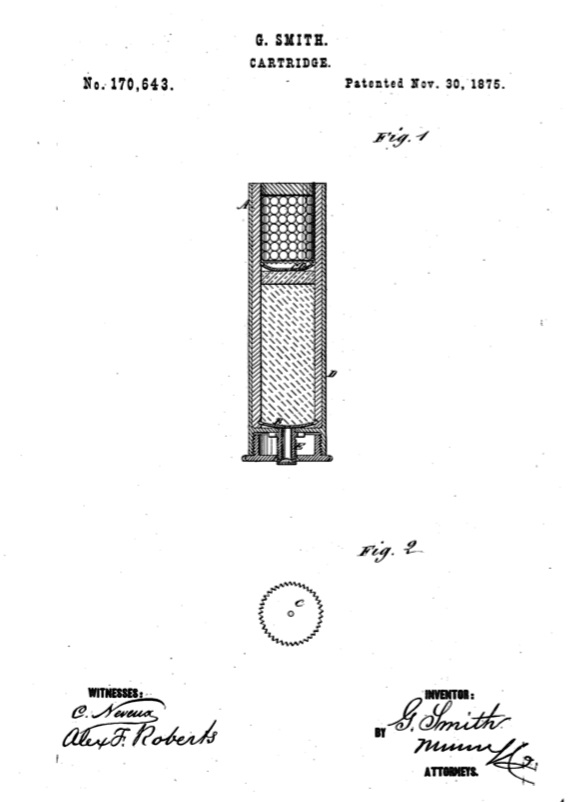
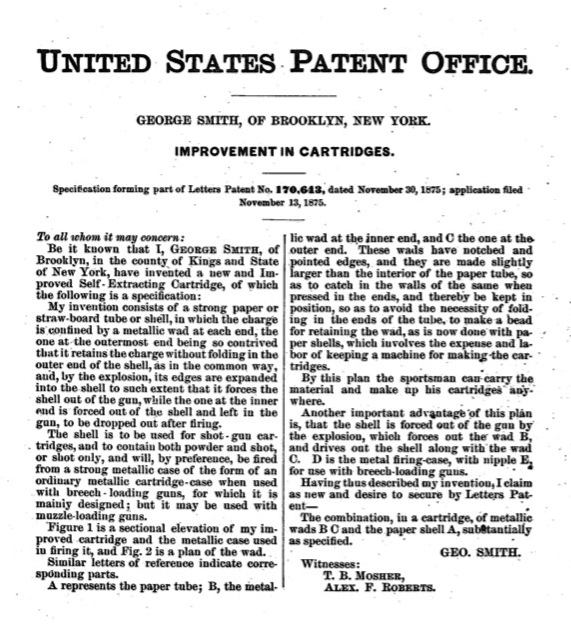
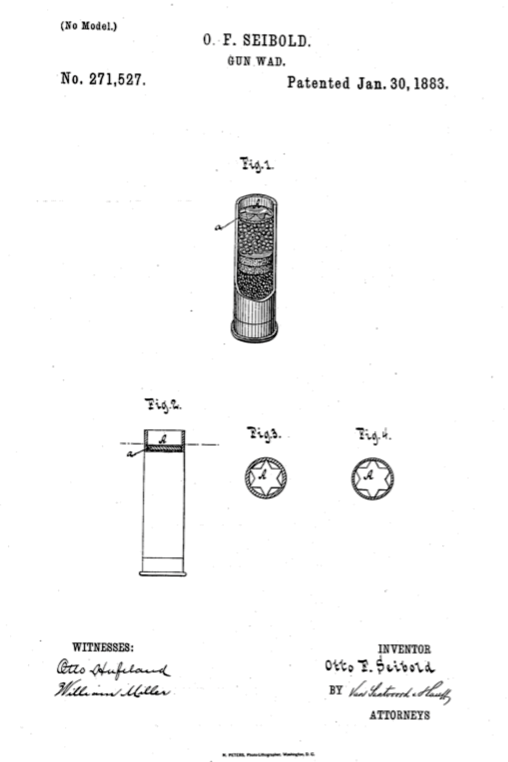
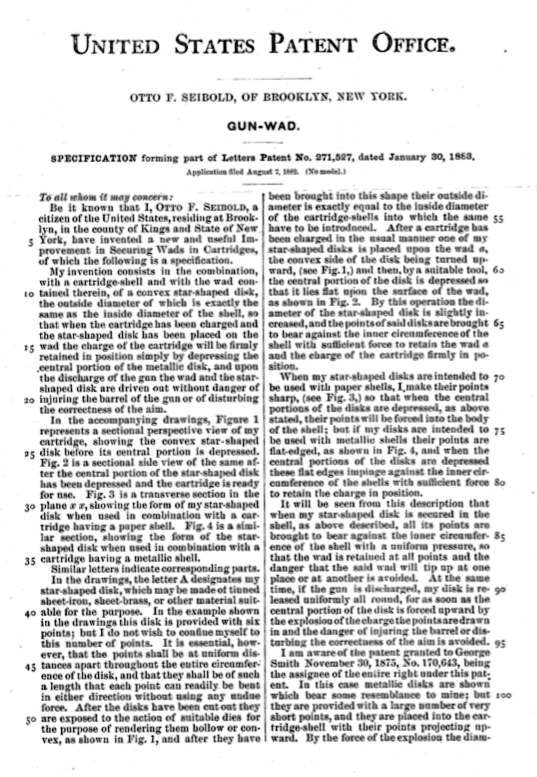
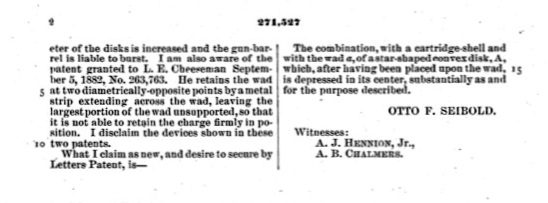 .
.